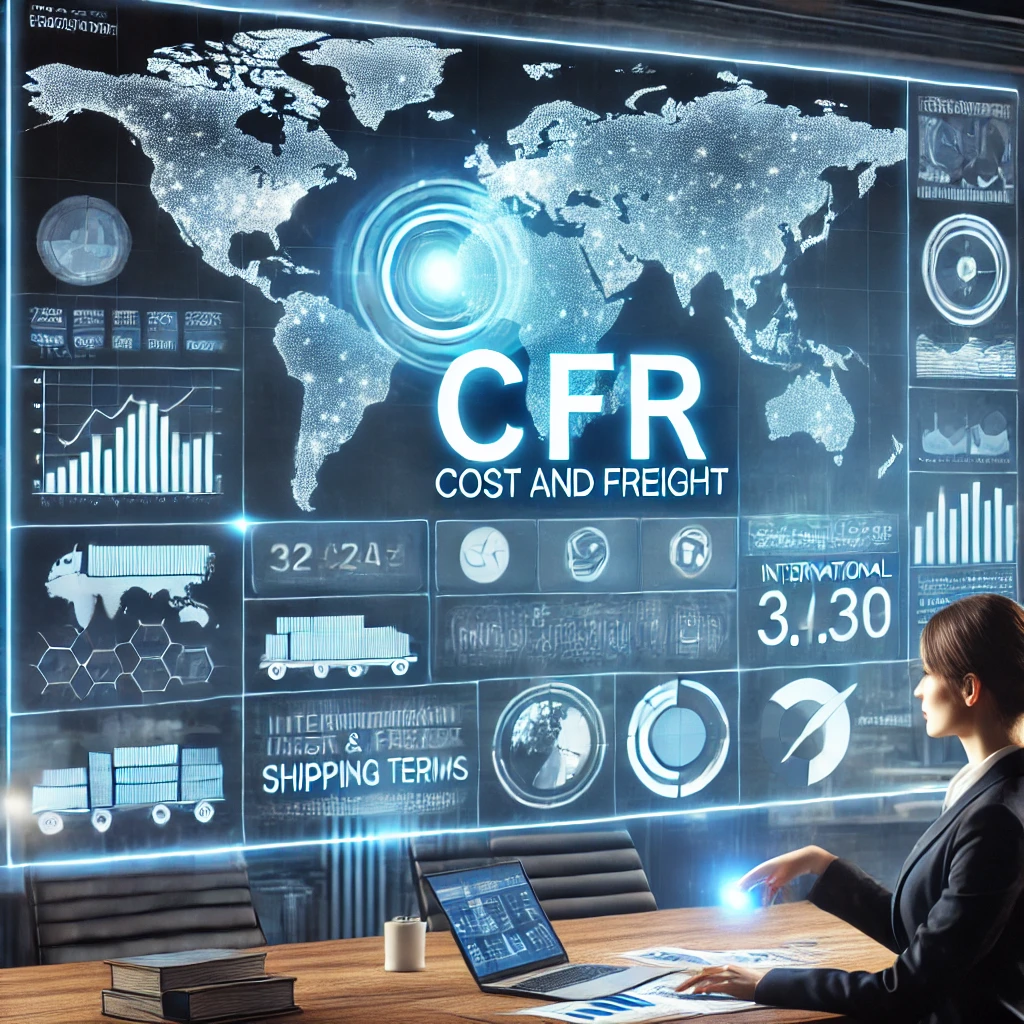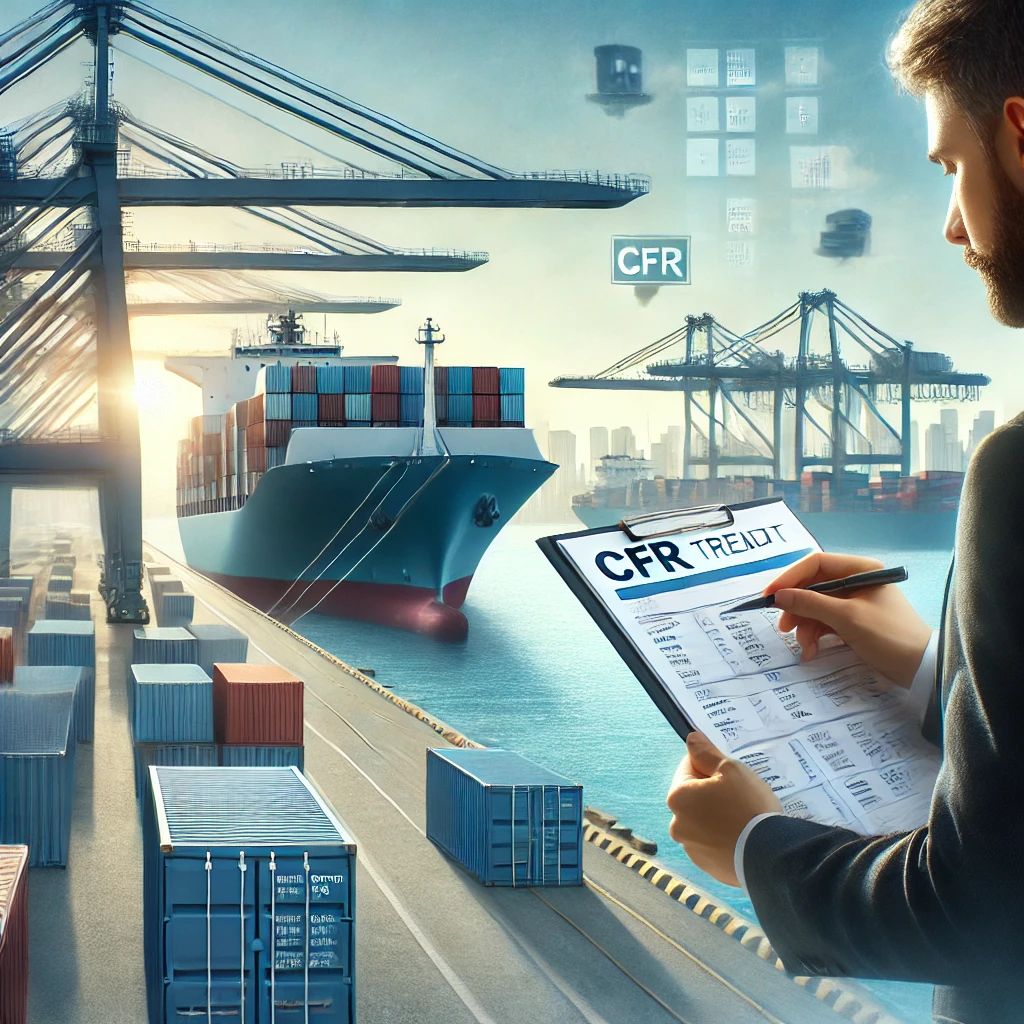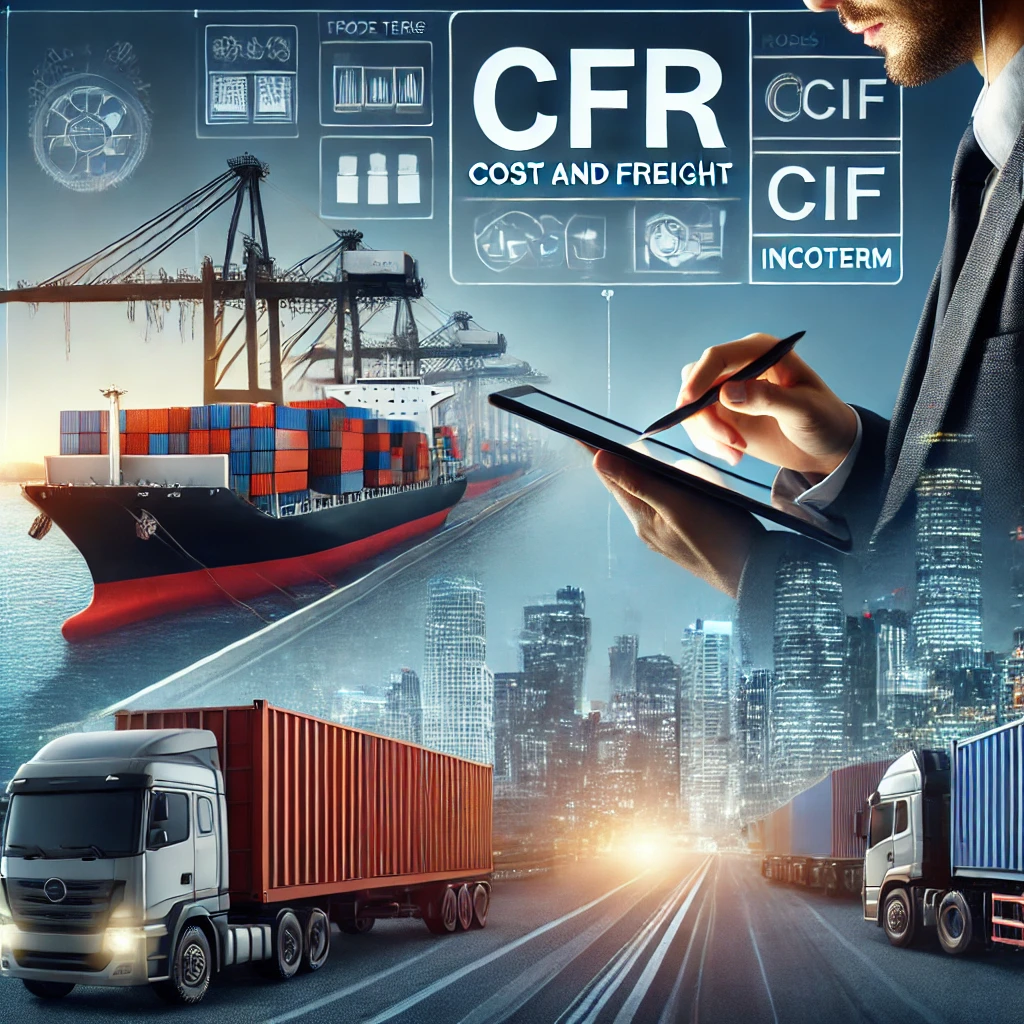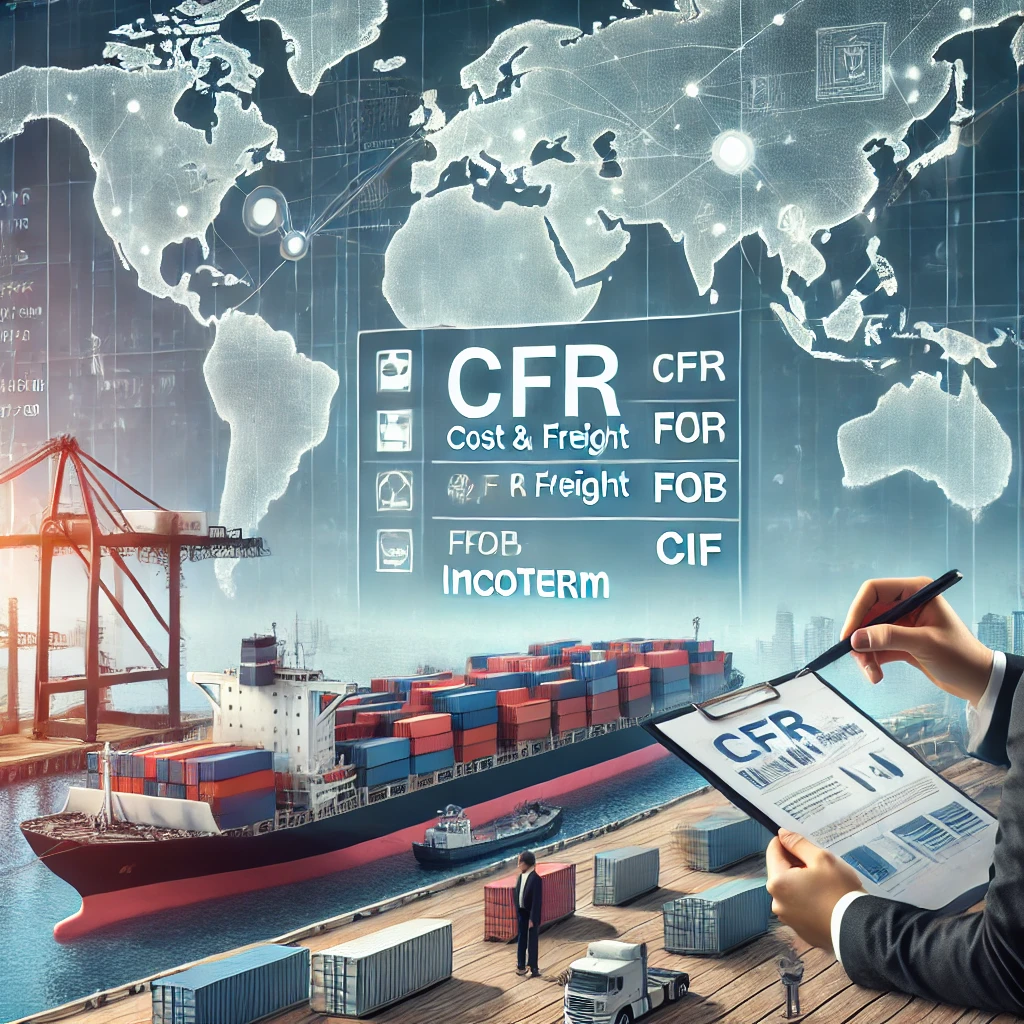Breaking Down CFR Meaning
This article will provide an in-depth look into CFR meaning, its key features, how it compares to other Incoterms, and its relevance in modern trade practices.

What Does CFR Meaning?
CFR (Cost and Freight) is an Incoterm that indicates that the seller is responsible for delivering goods to the port of destination and paying for the freight charges. However, the risk transfers to the buyer once the goods are loaded onto the vessel at the port of shipment.
✅ Seller pays for transportation from origin to the destination port.
✅ Buyer assumes risk once the goods are on board the vessel.
✅ CFR is used for sea and inland waterway transport only.
Example of CFR in Action
A company in China sells industrial equipment to a buyer in the United States under CFR terms. The seller arranges and pays for the shipping to the Port of Los Angeles. However, once the goods are loaded onto the vessel in Shanghai, the buyer assumes all risks, including damage or loss during the ocean transit.

Key Features of CFR
1. Seller’s Responsibilities
- ✅ Arranges and pays for freight to the destination port.
- ✅ Provides export documentation and clearance.
- ✅ Ensures goods are loaded onto the vessel.
2. Buyer’s Responsibilities
- ✅ Takes on risk once goods are on the ship.
- ✅ Arranges for insurance (if needed).
- ✅ Handles customs clearance and inland transportation at destination.
3. Risk and Cost Distribution
- Risk transfers at the port of shipment, not at the final destination.
- Seller covers freight charges, but the buyer handles insurance and other costs after goods are onboard.
4. CFR Applies Only to Sea and Inland Waterway Transport
- Not suitable for air, road, or rail transport.
- Typically used for bulk cargo, large shipments, and maritime trade.
CFR vs. Other Incoterms
Incoterm | Seller Pays for Freight? | Seller Covers Insurance? | Risk Transfers at? |
CFR (Cost & Freight) | ✅ Yes | ❌ No | Port of shipment |
CIF (Cost, Insurance & Freight) | ✅ Yes | ✅ Yes | Port of shipment |
FOB (Free on Board) | ❌ No | ❌ No | Port of shipment |
EXW (Ex Works) | ❌ No | ❌ No | Seller’s premises |
Key Difference: cfr meaning and CIF (Cost, Insurance, and Freight) are similar, but CIF includes insurance, while CFR does not.

Advantages and Disadvantages of CFR
✅ Advantages of CFR
- Predictable Costs – Seller arranges and pays for shipping.
- Simplified Logistics – The buyer does not have to manage shipping arrangements.
- Good for Bulk Shipments – Often used for large cargo loads transported by sea.
❌ Disadvantages of CFR
- Risk Transfers Early – The buyer takes on risk once the goods are onboard the ship.
- Buyer Must Arrange Insurance – Unlike CIF, CFR does not include insurance coverage.
- Limited to Maritime Transport – Cannot be used for air, rail, or road shipments.
When to Use CFR in Business Transactions
1. International Bulk Shipments
🛳️ Cfr meaningis commonly used for large shipments of raw materials, commodities, and manufactured goods.
2. Trade Between Exporters and Importers
📦 Manufacturers and wholesalers often use CFR to maintain control over shipping while minimizing risk.
3. Cost-Efficient Freight Arrangements
💰 Businesses looking to reduce logistics costs benefit from CFR, as sellers can negotiate better freight rates.
4. When the Buyer Prefers to Arrange Insurance
🛡️ CFR allows buyers to select their preferred insurance provider instead of relying on the seller’s coverage.

Challenges and Considerations in Using CFR
1. Risk Transfers at the Port of Shipment
⚠️ If the goods are damaged after loading onto the ship, the buyer is responsible, even though they haven’t received them yet.
2. No Insurance Coverage by Default
💰 Buyers must arrange separate insurance coverage for potential losses during transit.
3. Potential Delivery Delays
⏳ Shipping schedules depend on port congestion, weather, and carrier availability, which may cause unexpected delays.
4. Customs and Import Duties
📜 Buyers must handle import clearance and duties, which vary depending on the country’s regulations.
Frequently Asked Questions (FAQs)
Q1: Who is responsible for insurance in CFR?
📌 Answer: The buyer must arrange and pay for insurance. If insurance is required from the seller, CIF (Cost, Insurance & Freight) should be used instead.
Q2: Can CFR be used for air freight shipments?
📌 Answer: No, CFR applies only to sea and inland waterway transport.
Q3: What happens if goods are damaged in transit under CFR?
📌 Answer: The buyer cfr meaning assumes risk once goods are loaded onto the vessel, meaning they must cover any damages unless covered by insurance.
Q4: What is the difference between CFR and CIF?
📌 Answer: CIF includes insurance, whereas CFR does not. Both require the seller to arrange transport to the destination port.
Q5: How can I negotiate better shipping terms under CFR?
📌 Answer: Buyers should work with freight forwarders to secure insurance and manage port handling fees efficiently.
Conclusion
CFR (Cost and Freight) is a widely used Incoterm for international maritime trade, ensuring that sellers cover freight costs, while buyers take on risk once goods are onboard the vessel. It is a cost-effective solution for bulk shipments and international supply chains, though buyers must handle insurance and customs clearance themselves.
By understanding CFR’s benefits, risks, and best practices, businesses can negotiate smarter international contracts and optimize their shipping strategies.
